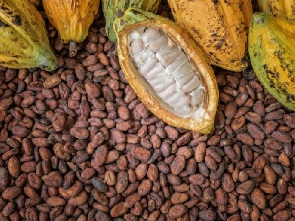 About US$500 million is expected to be received by the central bank in November
About US$500 million is expected to be received by the central bank in November
The cedi is set to witness improved stability during the last quarter of 2019, as a result of the inflow of the first tranche of this year’s edition of the Cocoa international syndicated loan, taken from a syndicate of international banks to fund purchases of cocoa from local farmers for the 2019/20 crop season.
As at end August 2019, the country’s Gross International Reserves (GIR) had increased by US$ 1.2 billion to US$ 8.2 billion, equivalent to 4.1 months of import cover, up from US$ 7.0 billion at the end of December 2018. This was primarily the result of a US$3 billion Eurobond issuance, the largest ever done by Ghana in March which took the country’s GIR to a long term high of well over GHc9 billion before drawdowns inevitably began to whittle them down again.
Based on the cocoa loan’s first tranche inflow of US$ 600 million, the reserves are expected to increase to about US$ 9.4 billion initially and possibly hit US$ 10 billion before the end of this year, as the final tranches are released to the country. This is unlikely however as drawdowns to service the public debt and meet government’s public spending bills will be done.
In November 2019, about US$500 million is expected to be received by the central bank with the remaining US$ 200 million being realized later in December.
Some analysts in the international treasury market believe that this would lessen the pressure on the cedi and possibly stir the appreciation of the currency against its major trading currency, the US dollar. By the end of September, the cedi had depreciated, year to date by 9.34 percent, although most of this had occurred during the first quarter of the year when fears lack of confidence in the cedi by foreign investors drove major disinvestment making the cedi one of the worst performing currencies in the world during the first 10 weeks of the year. Since then, however, the forex markets have settled and the cedi’s depreciation has only been marginal.
With cocoa loan inflows now entering its vaults, the central bank is expected to increase dollar allocations to the various commercial banks with a view to stemming the traditional faster depreciation of the cedi around the end of the year, caused by the spike in consumerism that usually accompanies the end of year festivities.
On October 1, 2019, the central bank conducted foreign exchange forward rate sales limited to 7-day, 15-day, 30-day, 45-day, 60-day and 75-day tenors, where the amount on offer was US$ 50 million.
This forms part of series of deliberate actions taken by the central bank to deal with the speculative nature of the market, as well as to keep the rates from spiralling, by6 allowing forex traders and users to lock in to exchange rates now for forex to be delivered between now and the end of the year.
Syndicated Loan
Ghana Cocoa Board (COCOBOD) in September, signed a cocoa loan syndication with some 24 banks in Paris, France to help finance cocoa purchase for the next crop season.
According to COCOBOD, it is targeting to purchase about 850,000 metric tonnes of cocoa beans from farmers in the country.
On Tuesday, the government announced an increase in cocoa producer price by more than 8 percent for the next crop season. A 64-kilo bag would now be sold at GH¢515, while a tone would go for GH¢8,249.